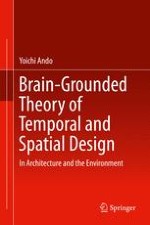2016 | OriginalPaper | Buchkapitel
2. Model of Auditory Brain System
verfasst von : Yoichi Ando
Erschienen in: Brain-Grounded Theory of Temporal and Spatial Design
Verlag: Springer Japan
Aktivieren Sie unsere intelligente Suche, um passende Fachinhalte oder Patente zu finden.
Wählen Sie Textabschnitte aus um mit Künstlicher Intelligenz passenden Patente zu finden. powered by
Markieren Sie Textabschnitte, um KI-gestützt weitere passende Inhalte zu finden. powered by
